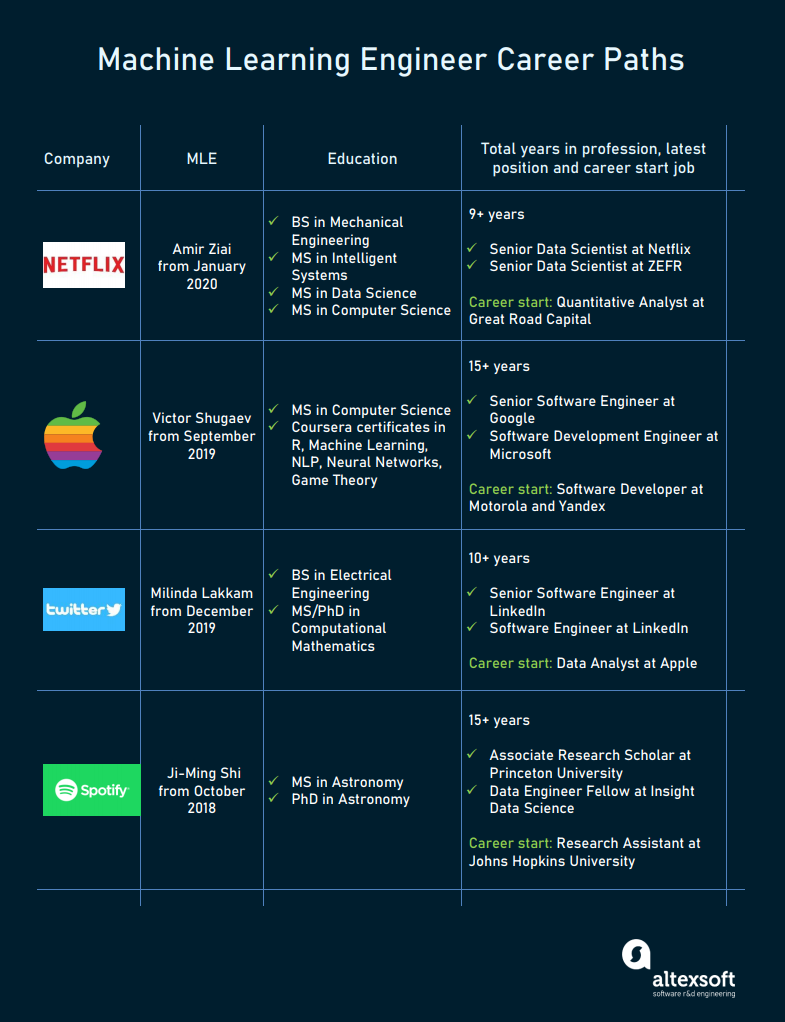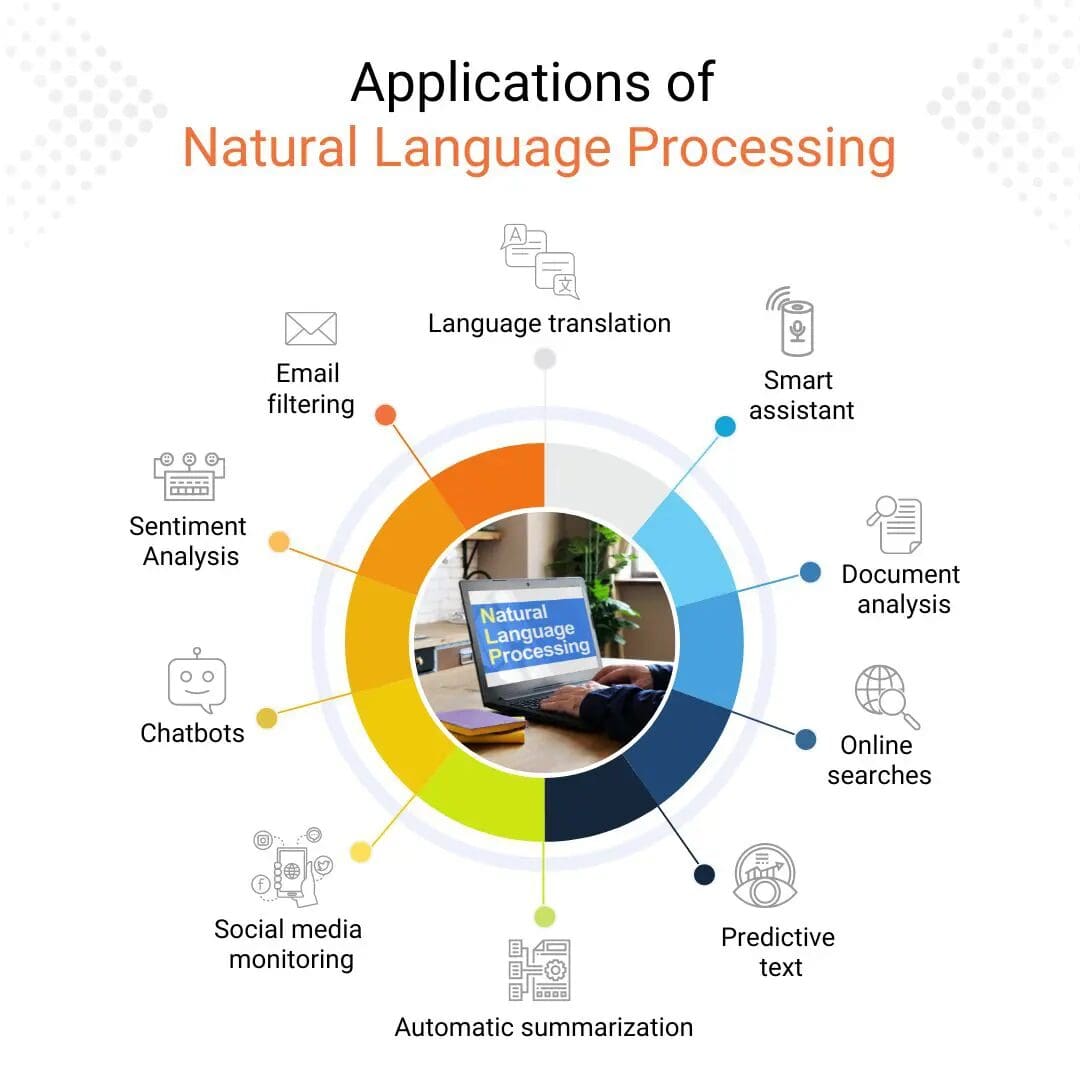All Categories
Featured
Table of Contents
- – The 9-Second Trick For Machine Learning Crash ...
- – Should I Learn Data Science As A Software Engi...
- – The Only Guide for Training For Ai Engineers
- – The Machine Learning Engineering Course For S...
- – Top Machine Learning Careers For 2025 - The ...
- – About How To Become A Machine Learning Engin...
You most likely understand Santiago from his Twitter. On Twitter, each day, he shares a great deal of practical features of artificial intelligence. Thanks, Santiago, for joining us today. Welcome. (2:39) Santiago: Thank you for inviting me. (3:16) Alexey: Before we enter into our primary topic of moving from software design to artificial intelligence, possibly we can start with your history.
I went to college, got a computer system scientific research level, and I began developing software. Back then, I had no idea about machine understanding.
I understand you have actually been utilizing the term "transitioning from software program design to artificial intelligence". I such as the term "contributing to my ability the artificial intelligence skills" much more due to the fact that I believe if you're a software designer, you are currently supplying a great deal of worth. By including artificial intelligence currently, you're boosting the effect that you can carry the market.
So that's what I would do. Alexey: This comes back to among your tweets or maybe it was from your program when you compare two strategies to learning. One strategy is the trouble based method, which you simply discussed. You locate an issue. In this instance, it was some issue from Kaggle regarding this Titanic dataset, and you simply discover how to fix this issue using a particular tool, like decision trees from SciKit Learn.
The 9-Second Trick For Machine Learning Crash Course
You initially learn math, or linear algebra, calculus. Then when you understand the math, you most likely to maker discovering theory and you find out the concept. Then four years later, you lastly involve applications, "Okay, exactly how do I make use of all these 4 years of math to fix this Titanic trouble?" ? So in the former, you sort of save yourself some time, I think.
If I have an electric outlet here that I need changing, I do not desire to most likely to college, spend four years comprehending the math behind electrical power and the physics and all of that, just to alter an electrical outlet. I prefer to begin with the electrical outlet and discover a YouTube video that assists me go through the trouble.
Negative example. You get the concept? (27:22) Santiago: I truly like the concept of beginning with a problem, trying to throw out what I know up to that trouble and recognize why it does not work. Order the devices that I require to fix that issue and start digging deeper and much deeper and much deeper from that factor on.
To ensure that's what I normally recommend. Alexey: Possibly we can talk a little bit about discovering sources. You pointed out in Kaggle there is an intro tutorial, where you can get and discover just how to make decision trees. At the beginning, before we started this interview, you pointed out a number of publications as well.
The only need for that program is that you understand a little bit of Python. If you go to my profile, the tweet that's going to be on the top, the one that states "pinned tweet".
Should I Learn Data Science As A Software Engineer? - Truths

Also if you're not a designer, you can begin with Python and work your way to more machine understanding. This roadmap is concentrated on Coursera, which is a platform that I actually, truly like. You can audit all of the courses for totally free or you can pay for the Coursera registration to get certifications if you intend to.
To ensure that's what I would do. Alexey: This comes back to one of your tweets or perhaps it was from your training course when you contrast 2 approaches to understanding. One technique is the issue based technique, which you just spoke about. You find an issue. In this instance, it was some trouble from Kaggle about this Titanic dataset, and you simply learn how to solve this problem using a details tool, like decision trees from SciKit Learn.

You first discover mathematics, or linear algebra, calculus. When you understand the mathematics, you go to device learning concept and you learn the concept.
If I have an electric outlet right here that I need changing, I do not want to go to college, spend four years understanding the math behind electricity and the physics and all of that, just to transform an outlet. I prefer to begin with the electrical outlet and locate a YouTube video that aids me undergo the problem.
Santiago: I actually like the idea of starting with a trouble, attempting to toss out what I know up to that trouble and understand why it does not function. Get hold of the tools that I need to solve that problem and begin digging much deeper and much deeper and deeper from that point on.
Alexey: Perhaps we can talk a bit regarding learning resources. You stated in Kaggle there is an intro tutorial, where you can obtain and learn exactly how to make decision trees.
The Only Guide for Training For Ai Engineers
The only requirement for that training course is that you understand a little bit of Python. If you're a developer, that's a wonderful starting point. (38:48) Santiago: If you're not a programmer, after that I do have a pin on my Twitter account. If you most likely to my account, the tweet that's going to get on the top, the one that states "pinned tweet".
Even if you're not a designer, you can begin with Python and function your way to even more artificial intelligence. This roadmap is focused on Coursera, which is a platform that I really, truly like. You can audit all of the training courses free of cost or you can spend for the Coursera subscription to obtain certifications if you want to.
The Machine Learning Engineering Course For Software Engineers Ideas
Alexey: This comes back to one of your tweets or maybe it was from your program when you contrast 2 strategies to discovering. In this instance, it was some trouble from Kaggle concerning this Titanic dataset, and you just find out exactly how to address this problem making use of a details tool, like choice trees from SciKit Learn.

You initially learn mathematics, or direct algebra, calculus. When you understand the math, you go to equipment understanding theory and you find out the theory. After that four years later, you lastly come to applications, "Okay, exactly how do I use all these 4 years of math to resolve this Titanic problem?" ? In the former, you kind of save yourself some time, I assume.
If I have an electric outlet below that I need changing, I don't wish to most likely to university, invest 4 years recognizing the mathematics behind electrical power and the physics and all of that, just to transform an outlet. I would rather begin with the outlet and discover a YouTube video that assists me undergo the trouble.
Santiago: I really like the idea of beginning with a trouble, trying to throw out what I recognize up to that trouble and recognize why it does not work. Get hold of the tools that I require to address that issue and start digging much deeper and deeper and deeper from that point on.
To ensure that's what I normally suggest. Alexey: Maybe we can chat a little bit regarding finding out sources. You discussed in Kaggle there is an intro tutorial, where you can get and discover exactly how to choose trees. At the start, before we started this meeting, you stated a pair of publications.
Top Machine Learning Careers For 2025 - The Facts
The only demand for that course is that you know a little bit of Python. If you go to my account, the tweet that's going to be on the top, the one that claims "pinned tweet".
Also if you're not a developer, you can begin with Python and function your method to more artificial intelligence. This roadmap is concentrated on Coursera, which is a system that I really, actually like. You can audit all of the training courses completely free or you can pay for the Coursera membership to obtain certificates if you intend to.
That's what I would certainly do. Alexey: This returns to one of your tweets or maybe it was from your course when you compare 2 methods to knowing. One approach is the trouble based method, which you simply spoke about. You find a trouble. In this case, it was some problem from Kaggle about this Titanic dataset, and you simply find out how to solve this problem utilizing a details tool, like choice trees from SciKit Learn.
You initially learn math, or direct algebra, calculus. After that when you understand the math, you most likely to artificial intelligence theory and you discover the theory. Four years later on, you finally come to applications, "Okay, exactly how do I make use of all these four years of math to fix this Titanic trouble?" Right? So in the former, you sort of conserve yourself some time, I think.
About How To Become A Machine Learning Engineer (With Skills)
If I have an electric outlet here that I require changing, I do not wish to go to university, invest four years recognizing the mathematics behind electrical energy and the physics and all of that, just to transform an outlet. I would certainly rather begin with the outlet and discover a YouTube video clip that assists me undergo the problem.
Santiago: I really like the concept of beginning with a trouble, trying to toss out what I know up to that trouble and understand why it does not work. Get the devices that I need to address that trouble and begin digging deeper and much deeper and much deeper from that point on.

Alexey: Perhaps we can chat a bit about learning sources. You mentioned in Kaggle there is an intro tutorial, where you can obtain and discover how to make choice trees.
The only demand for that course is that you recognize a bit of Python. If you're a programmer, that's a wonderful starting point. (38:48) Santiago: If you're not a developer, then I do have a pin on my Twitter account. If you go to my account, the tweet that's mosting likely to get on the top, the one that says "pinned tweet".
Even if you're not a programmer, you can begin with Python and function your means to even more machine learning. This roadmap is concentrated on Coursera, which is a system that I truly, actually like. You can examine all of the training courses absolutely free or you can spend for the Coursera membership to obtain certifications if you desire to.
Table of Contents
- – The 9-Second Trick For Machine Learning Crash ...
- – Should I Learn Data Science As A Software Engi...
- – The Only Guide for Training For Ai Engineers
- – The Machine Learning Engineering Course For S...
- – Top Machine Learning Careers For 2025 - The ...
- – About How To Become A Machine Learning Engin...
Latest Posts
What’s The Faang Hiring Process Like In 2025?
Entry-level Software Engineer Interview Questions (With Sample Responses)
Where To Find Free Mock Technical Interviews Online
More
Latest Posts
What’s The Faang Hiring Process Like In 2025?
Entry-level Software Engineer Interview Questions (With Sample Responses)
Where To Find Free Mock Technical Interviews Online